Learn more about the 16 different report modules available to you when generating your Functional Health Report.
Learn More About Reports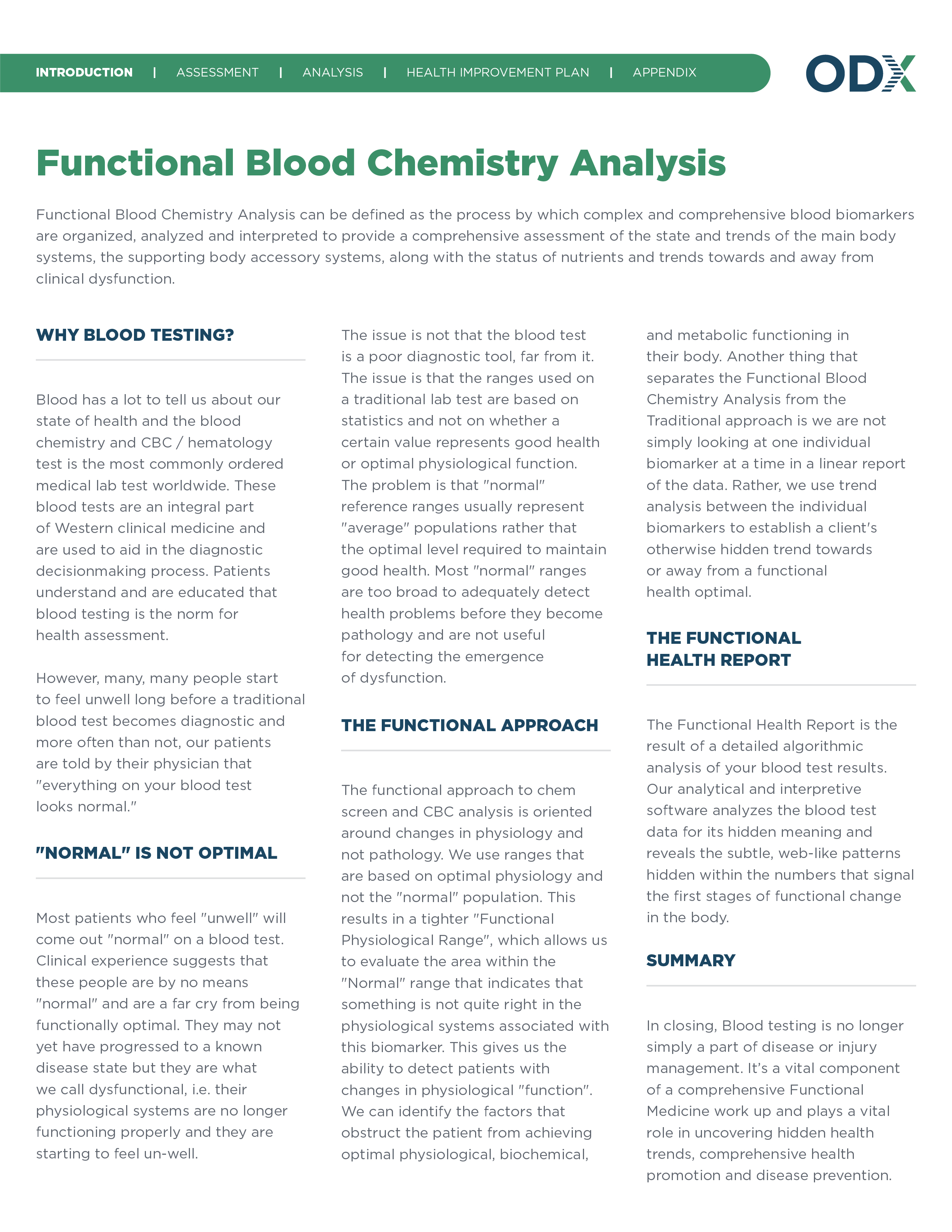
Provide a simple, easy-to-understand overview of the functional approach to blood chemistry analysis to your patients. With the right context, patients will more clearly see the value of their Functional Health Report.
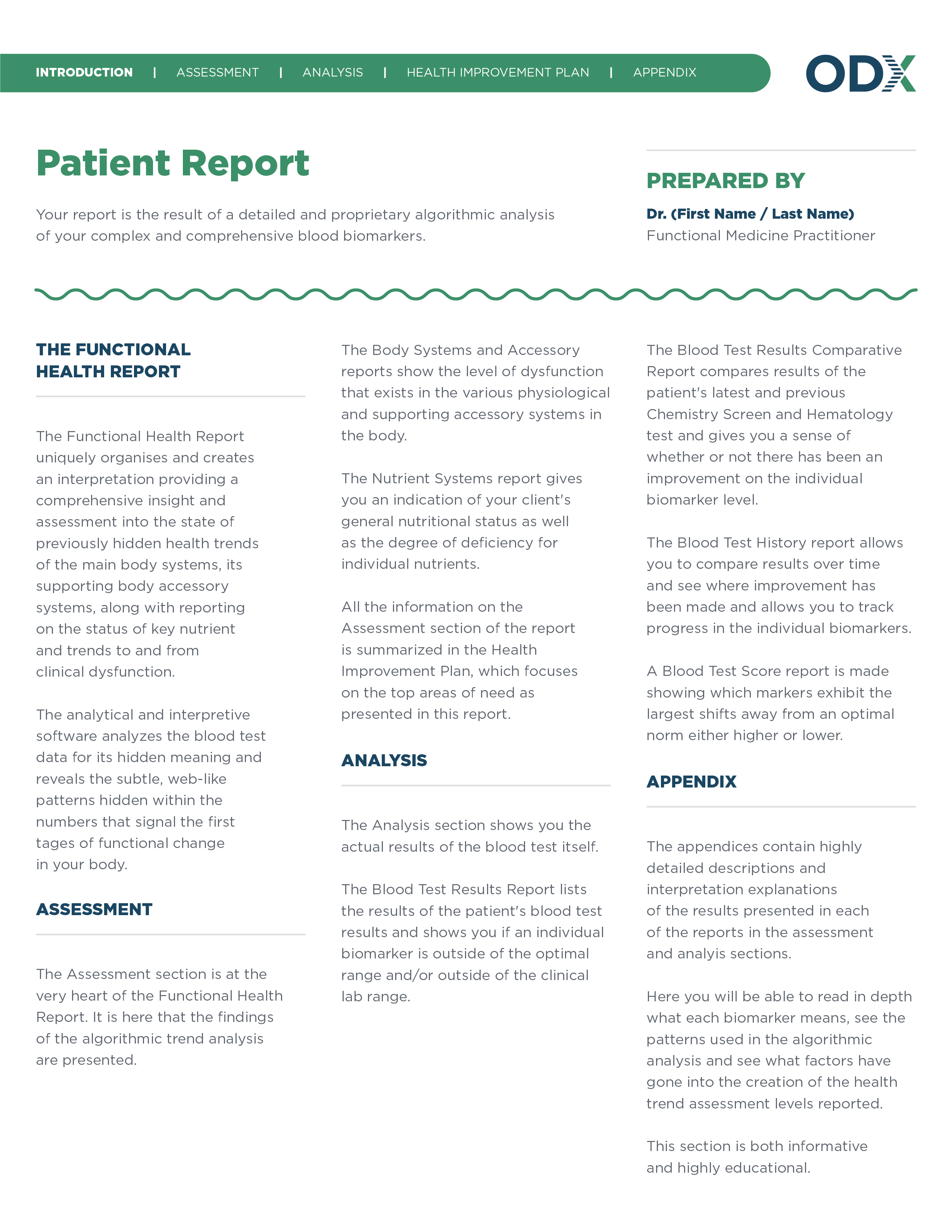
Introduce the modules in the Functional Health Report so your patients can easily interpret and digest the information contained within.
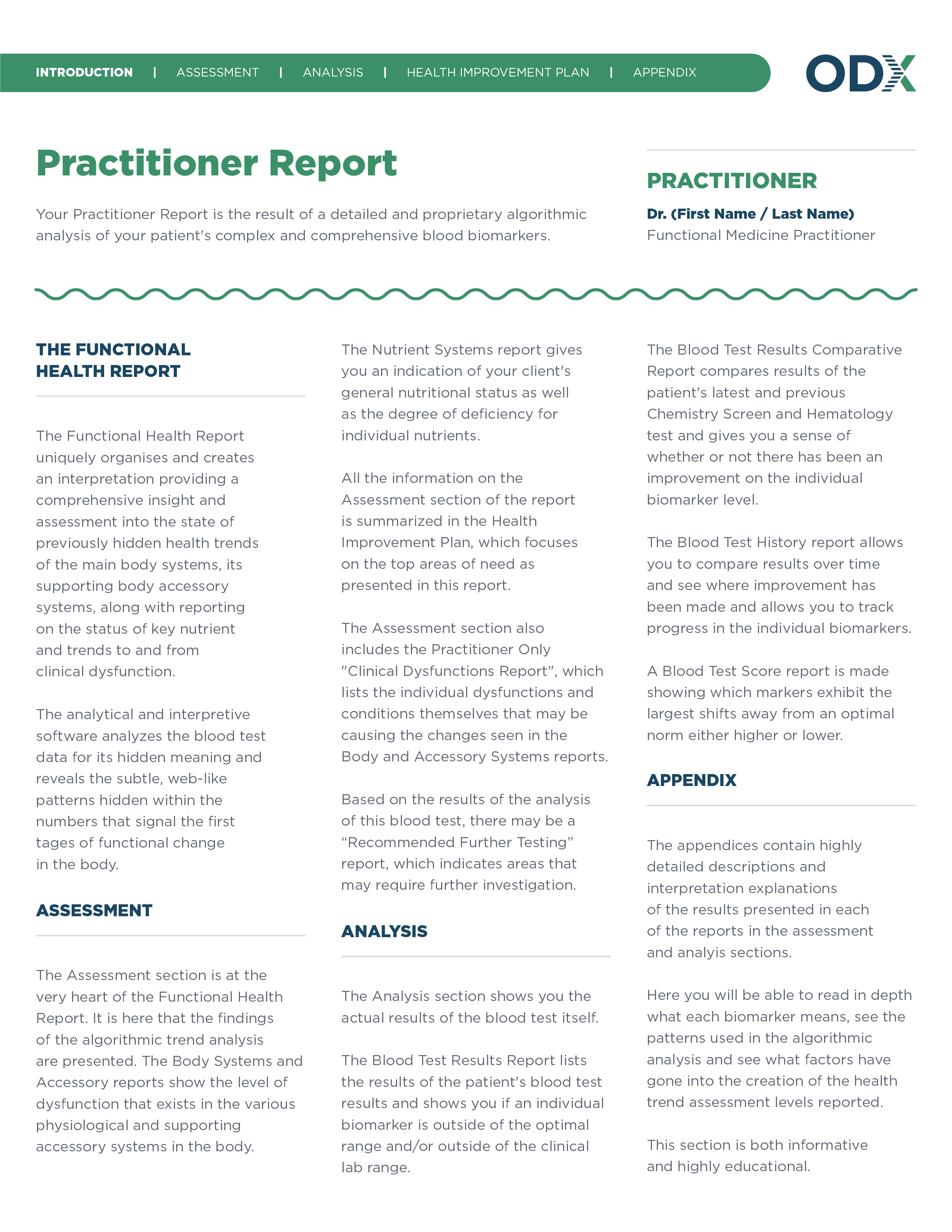
Contextualize the Functional Health Report so that you or other practitioners are equipped with the knowledge to interpret its information.
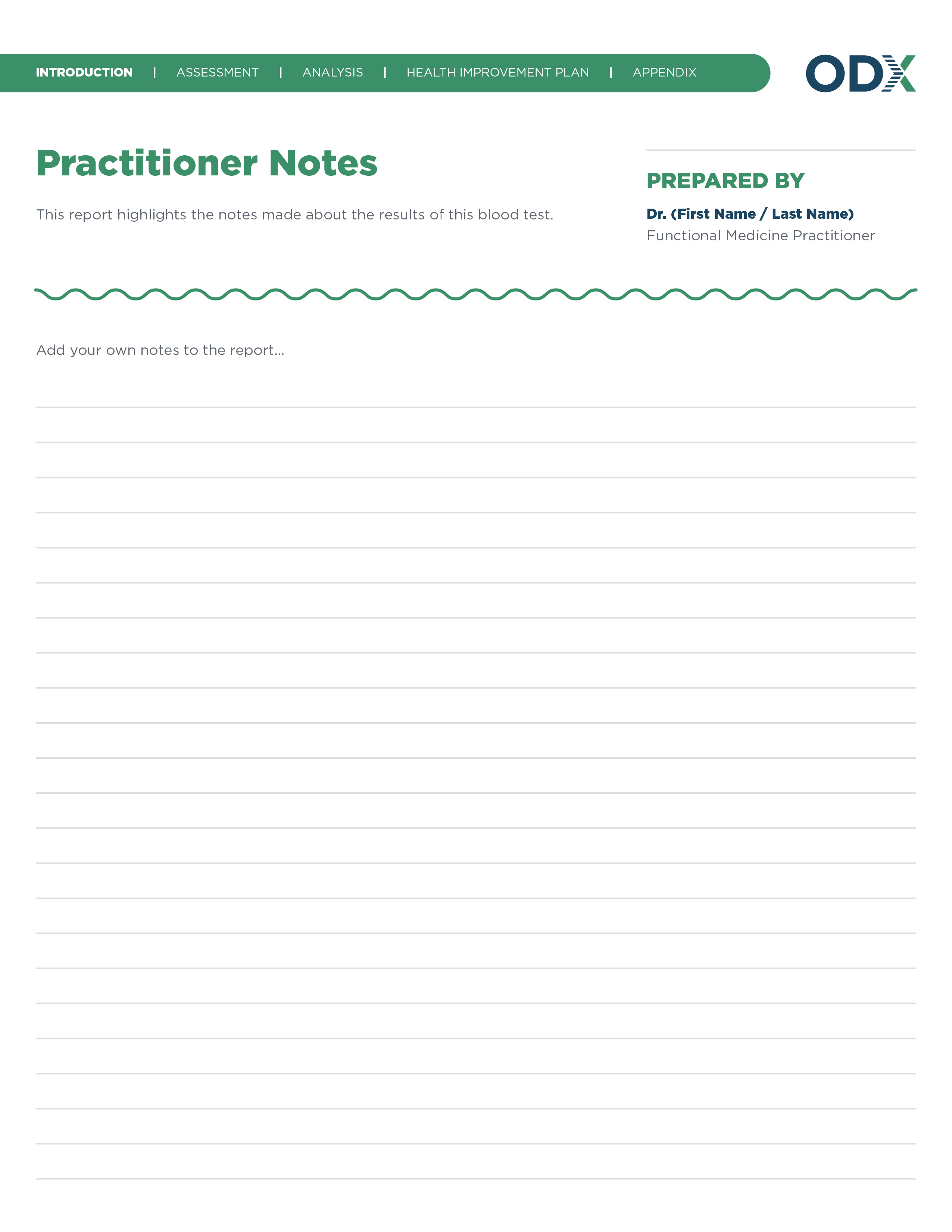
Add your own notes to deliver alongside the Functional Health Report to your patients. You can call out important information, detail your treatment plan, explain the report further or add any information you feel is relevant to your patients’ health journey.
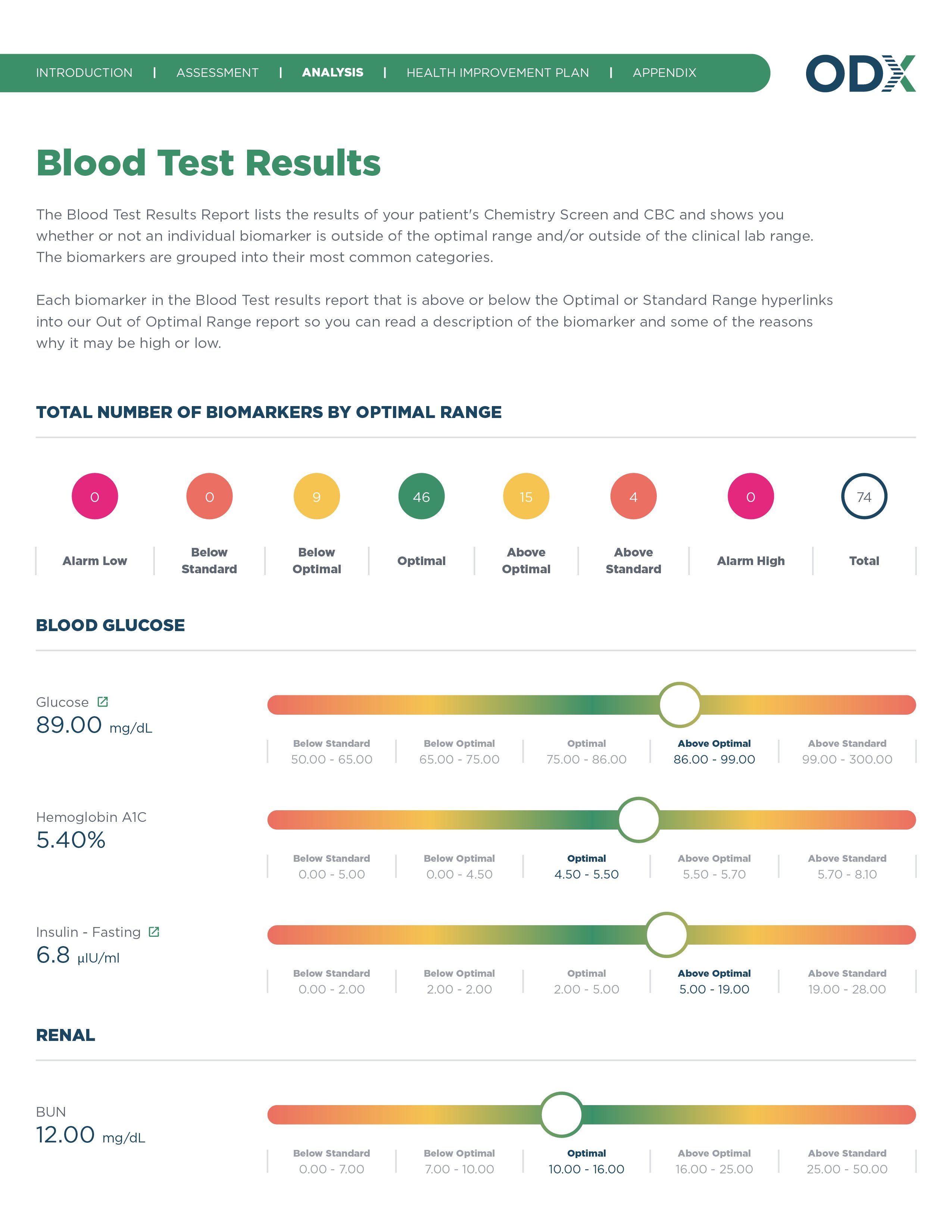
Now that you’ve received your patients’ blood test results, it’s time to review them with a functional lens. This report lists the results of the patients’ tests and whether or not a given biomarker is outside of the optimal range or lab range.
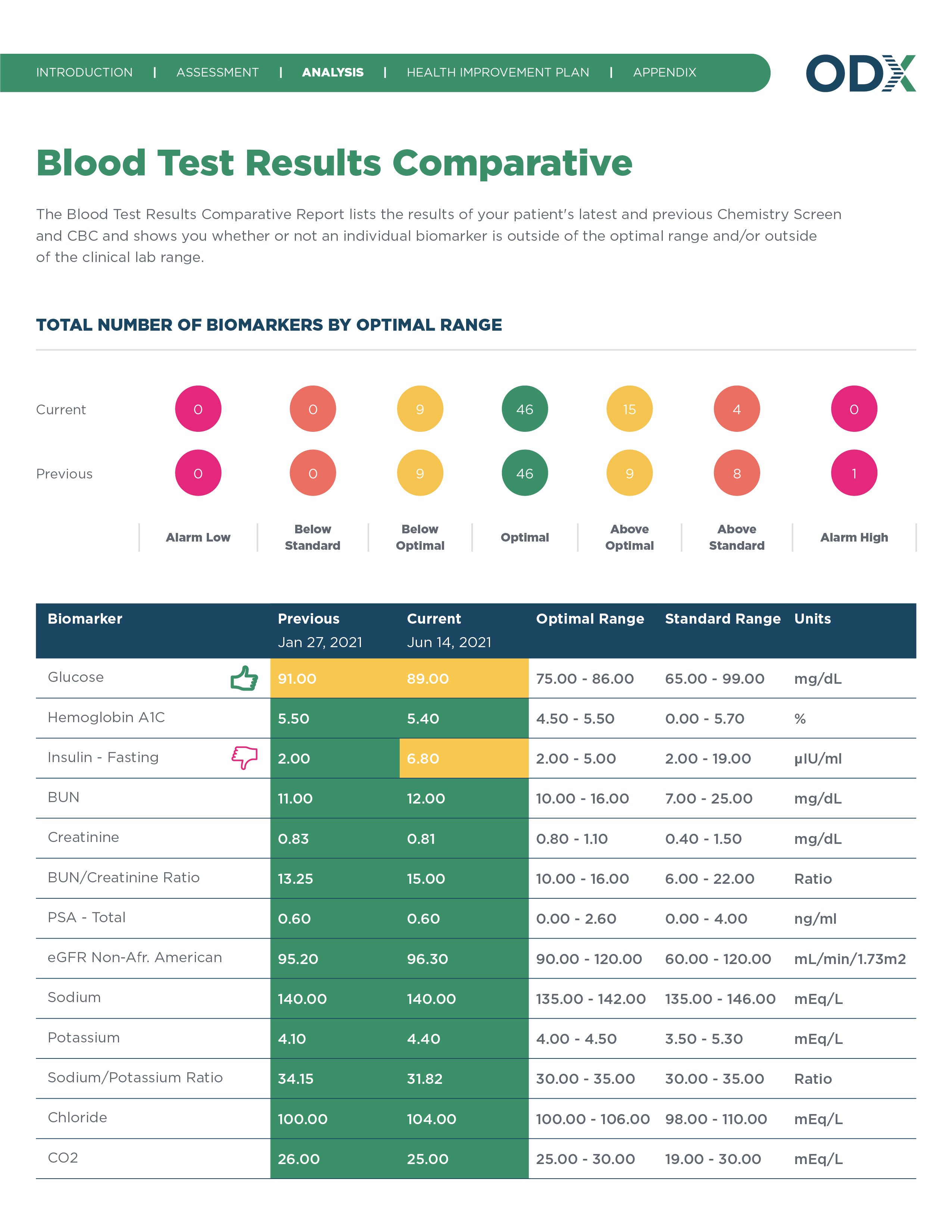
How does a patient’s most recent blood biomarker profile compare to a previous one? This report calls out major areas of change between two lab tests.
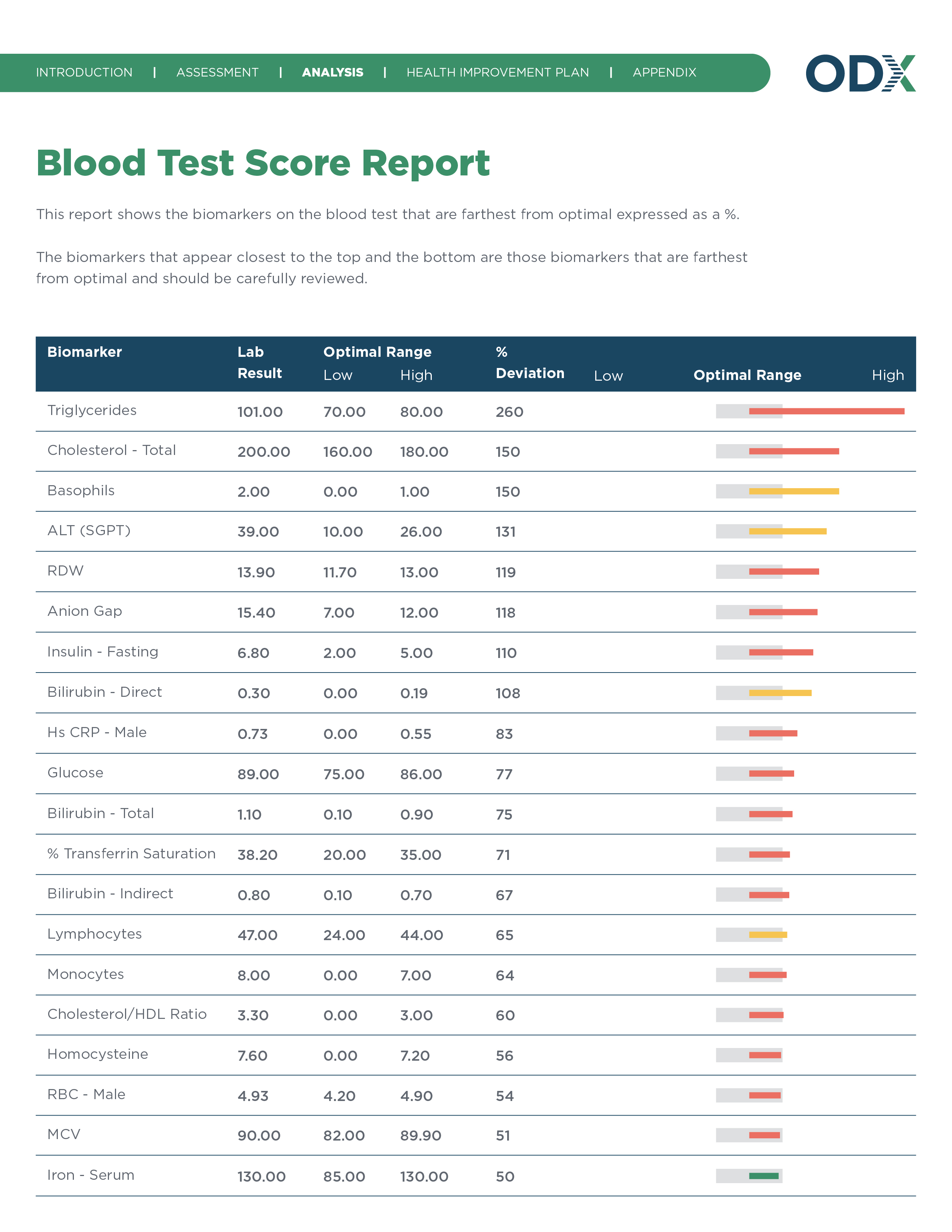
Using this report, you can quickly view which biomarkers scored farthest from the median on your patients’ blood test as expressed as a percentage score.
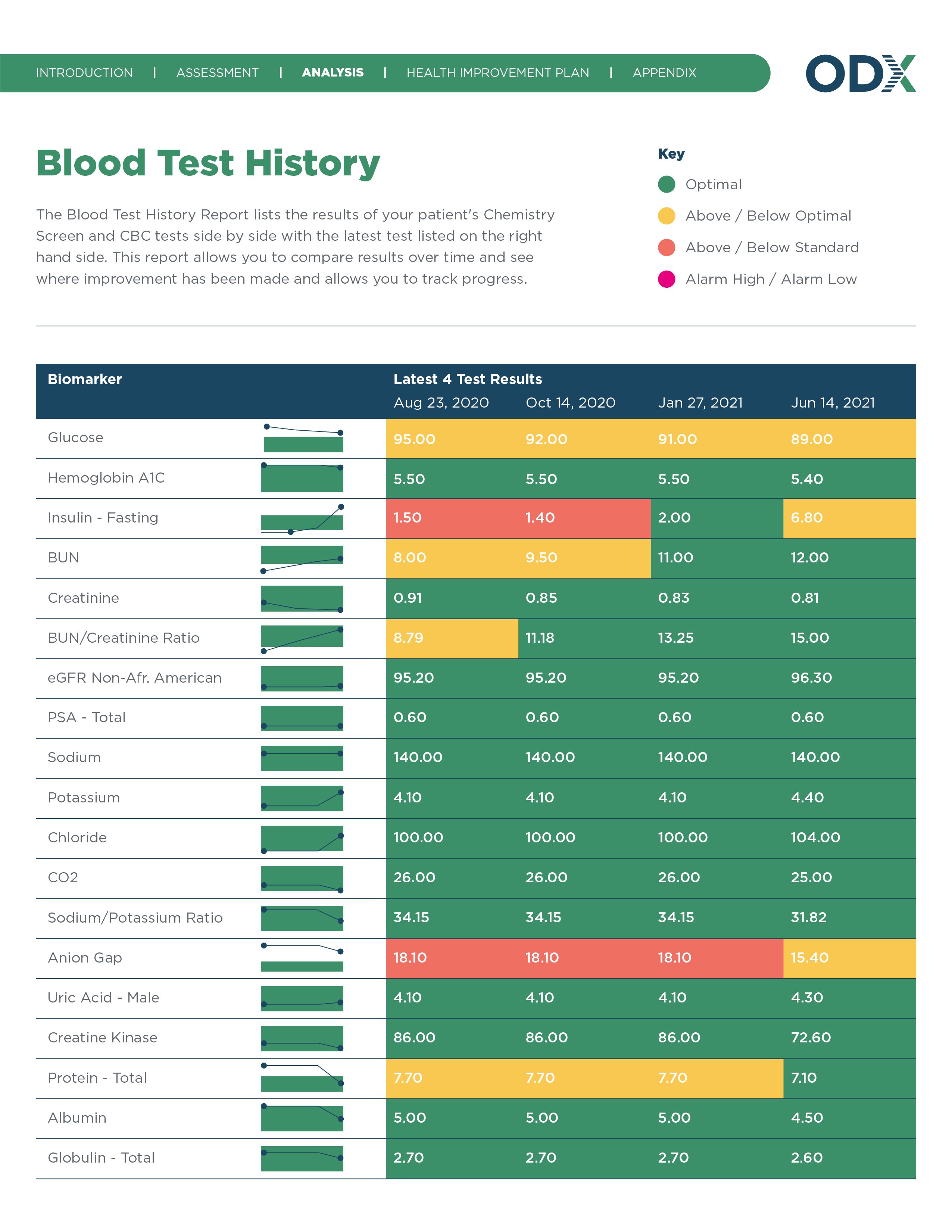
Take a broader view of your patients’ progress over time using the Blood Test History report. This report shows the past 6 blood tests side by side, graphing biomarker change over time.
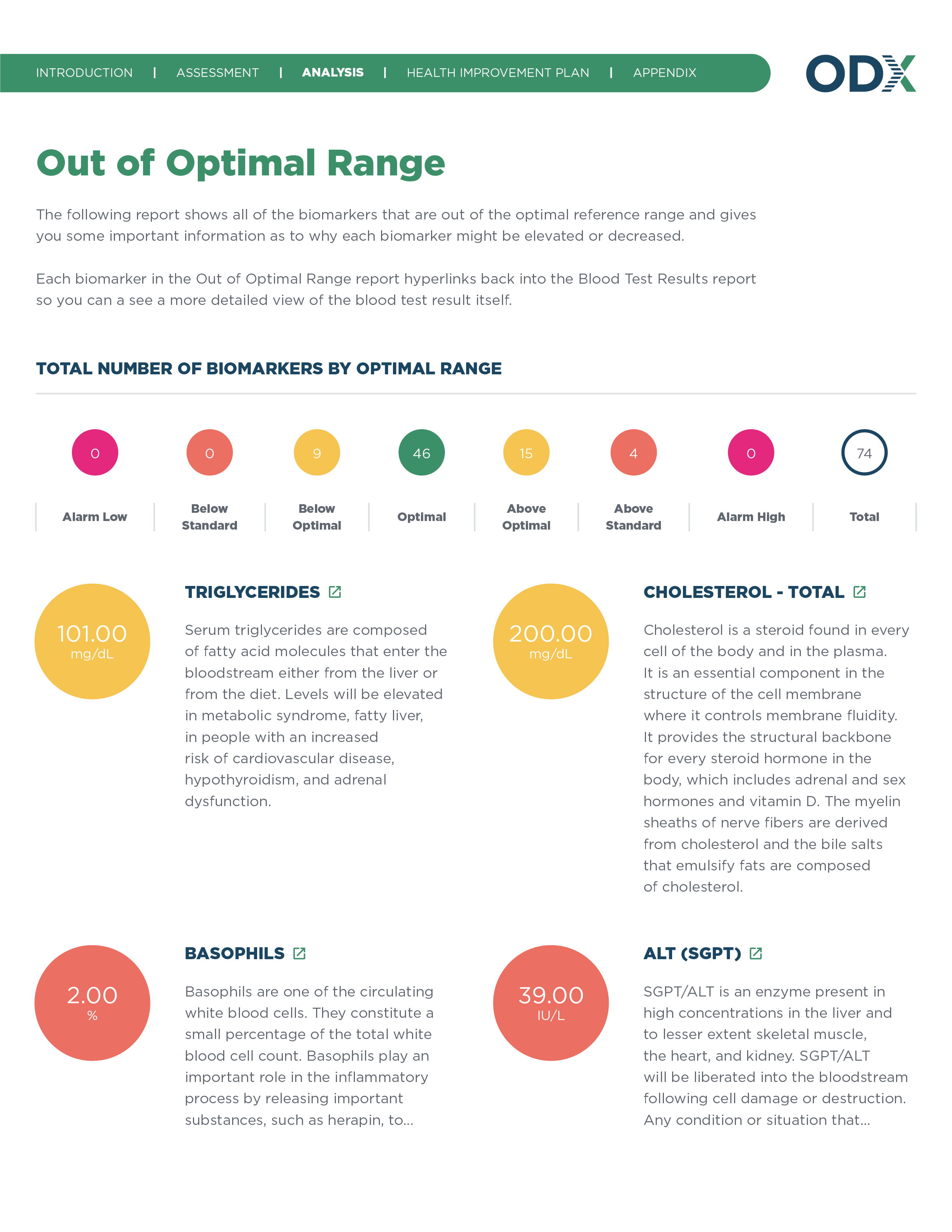
Easily view all of the biomarkers out of their optimal ranges at a glance. Using the Optimal DX Software platform’s built-in functional blood chemistry information, your patients will gain a brief description of why each biomarker might be elevated or decreased.
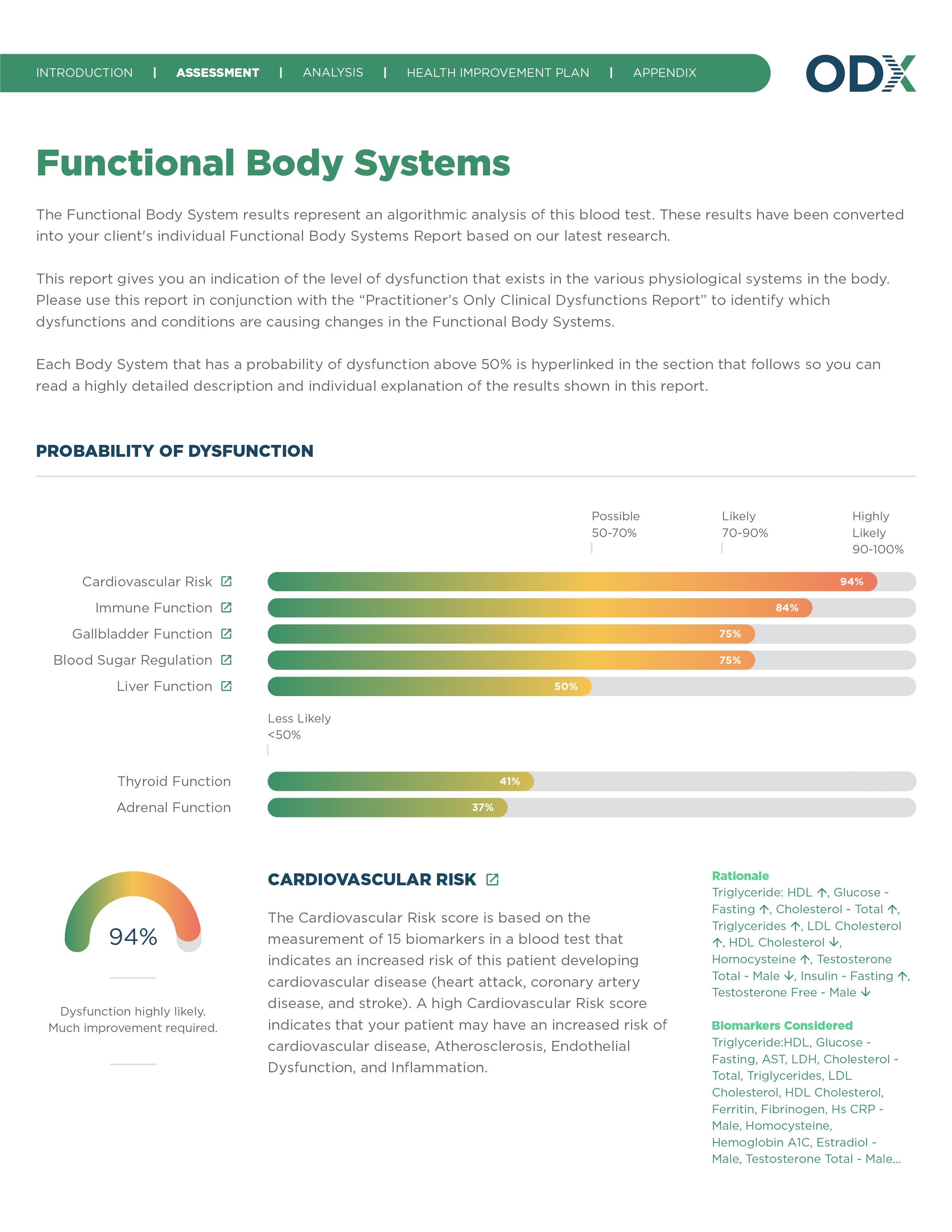
View an algorithmically derived assessment of dysfunction risk for each major functional body system — such as the immune, cardiovascular and others — based on the data from your patients’ latest blood test results.
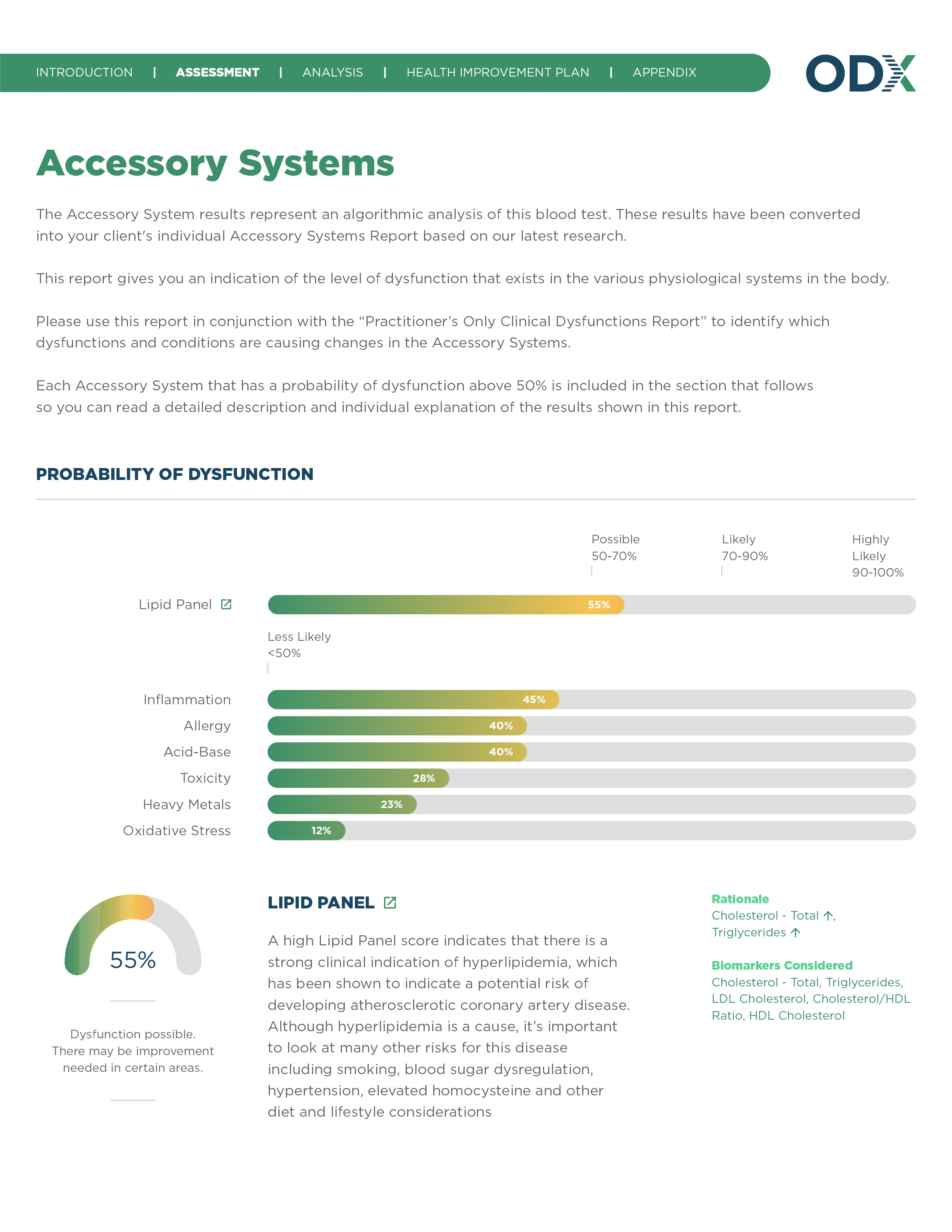
View an algorithmic analysis of the probability of dysfunction for each accessory functional system — such as inflammatory, acid-base and others — based on the data from your patients’ latest blood test results.
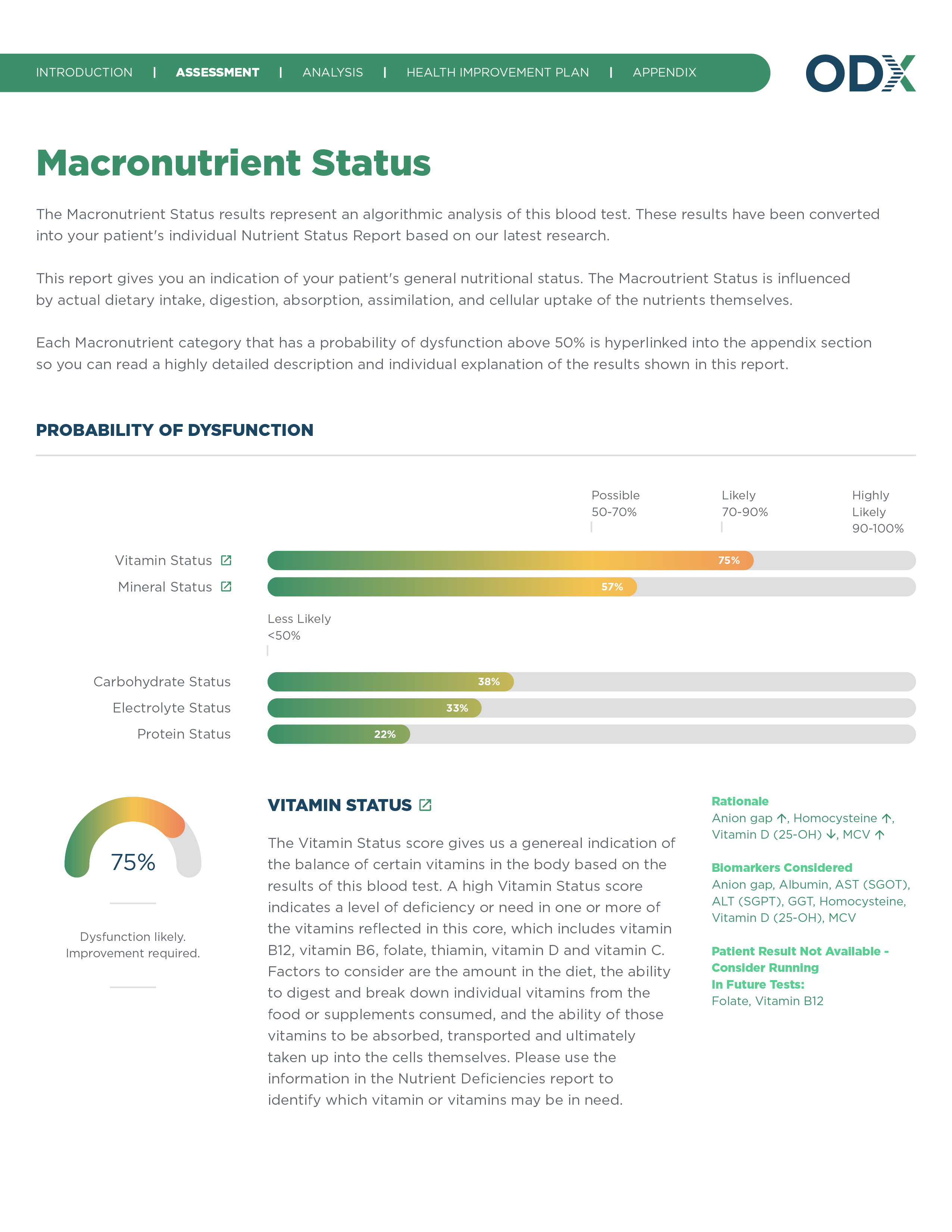
Using the results of your patients’ blood test, see the likelihood of dysfunction based on their overall macronutrient status and their individual dietary domains, like vitamin, mineral and protein intake, digestion, absorption, assimilation and cellular uptake.
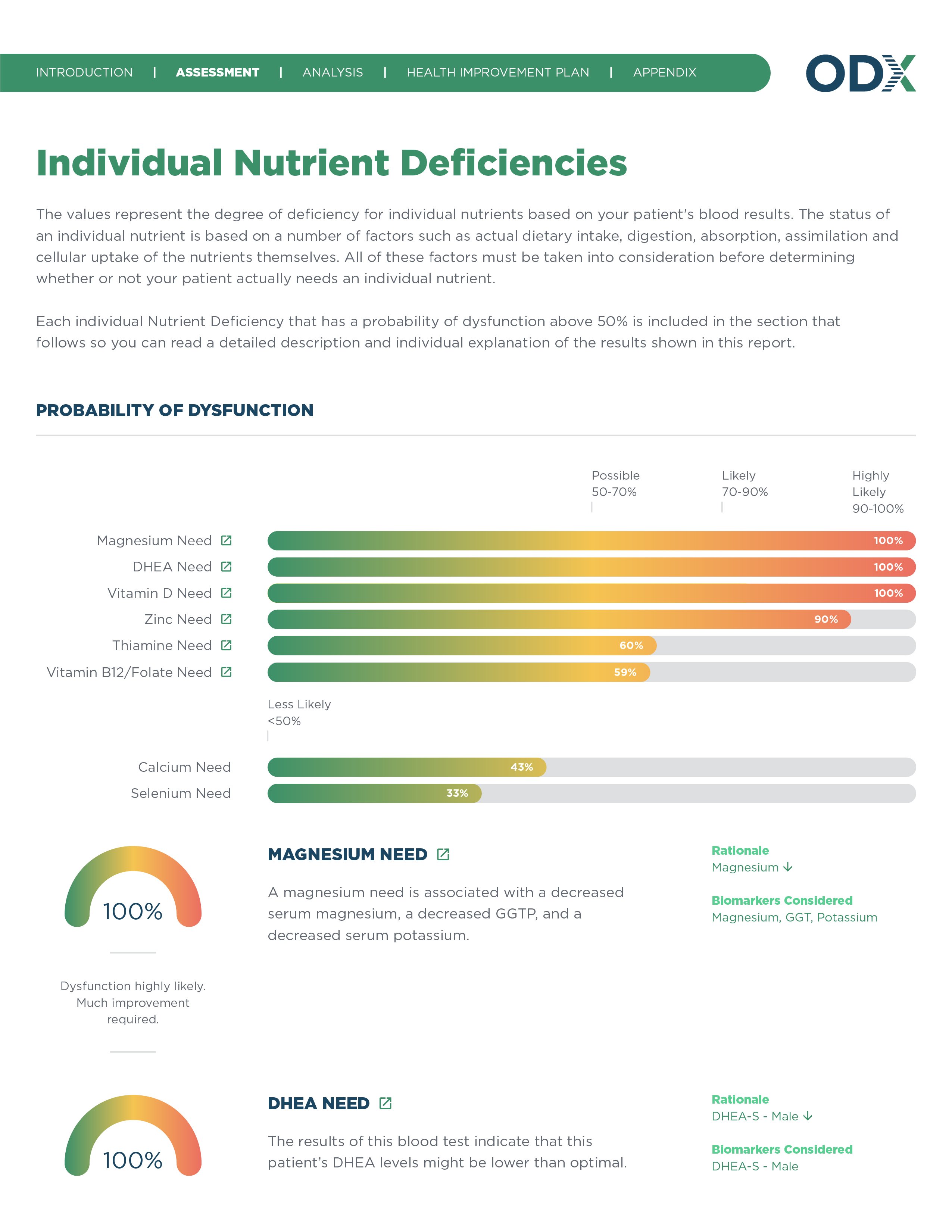
Dive deeper into your patients’ individual nutrient needs to determine whether there is dysfunction related to the intake, digestion, absorption, assimilation and cellular uptake of nutrients based on the blood biomarker levels detected in your patients’ most recent blood test.
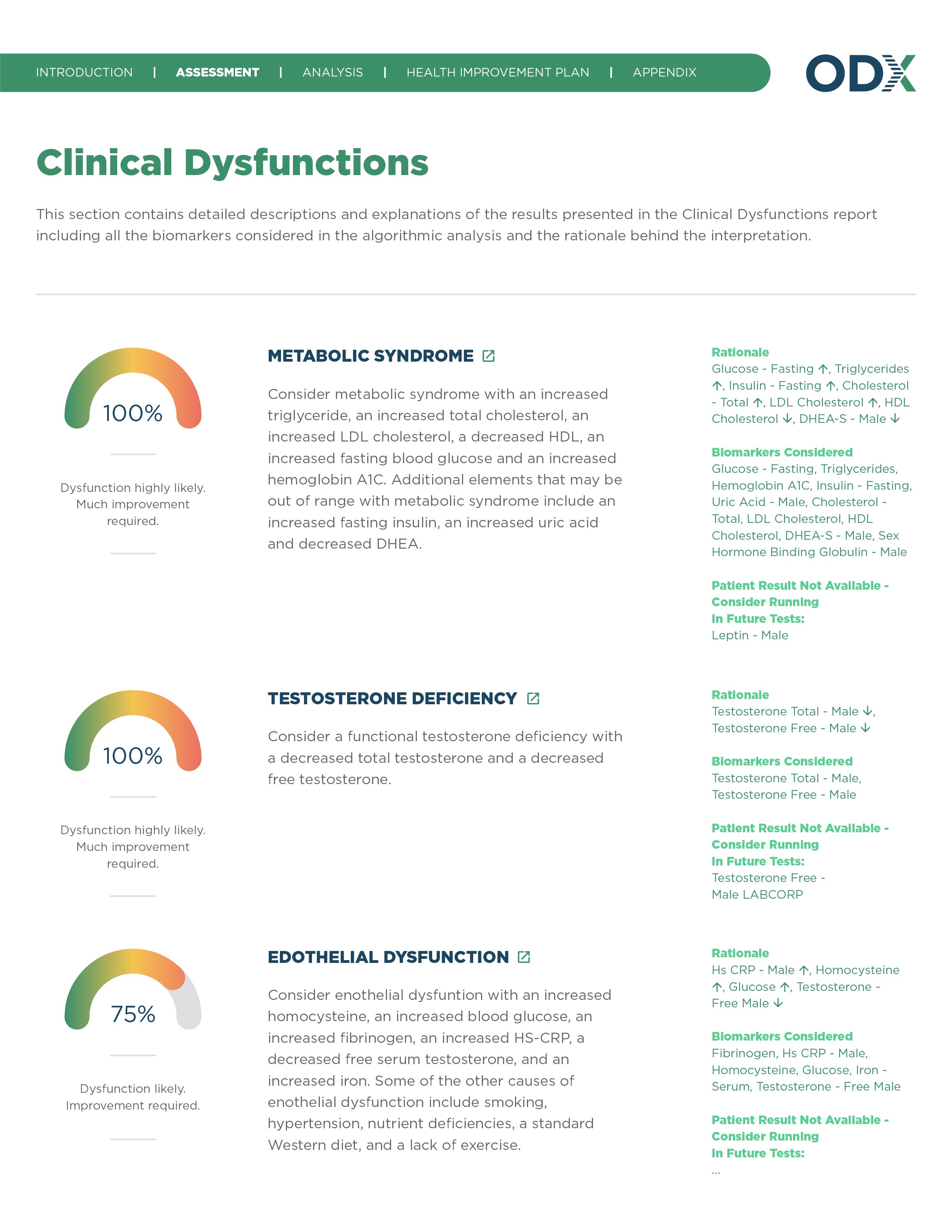
The Clinical Dysfunctions report provides detailed descriptions and explanations of the major areas of concern surfaced by the analysis. It includes all biomarkers involved in the likely dysfunction, the reason why dysfunction is likely with this pattern of biomarkers and recommended future tests.
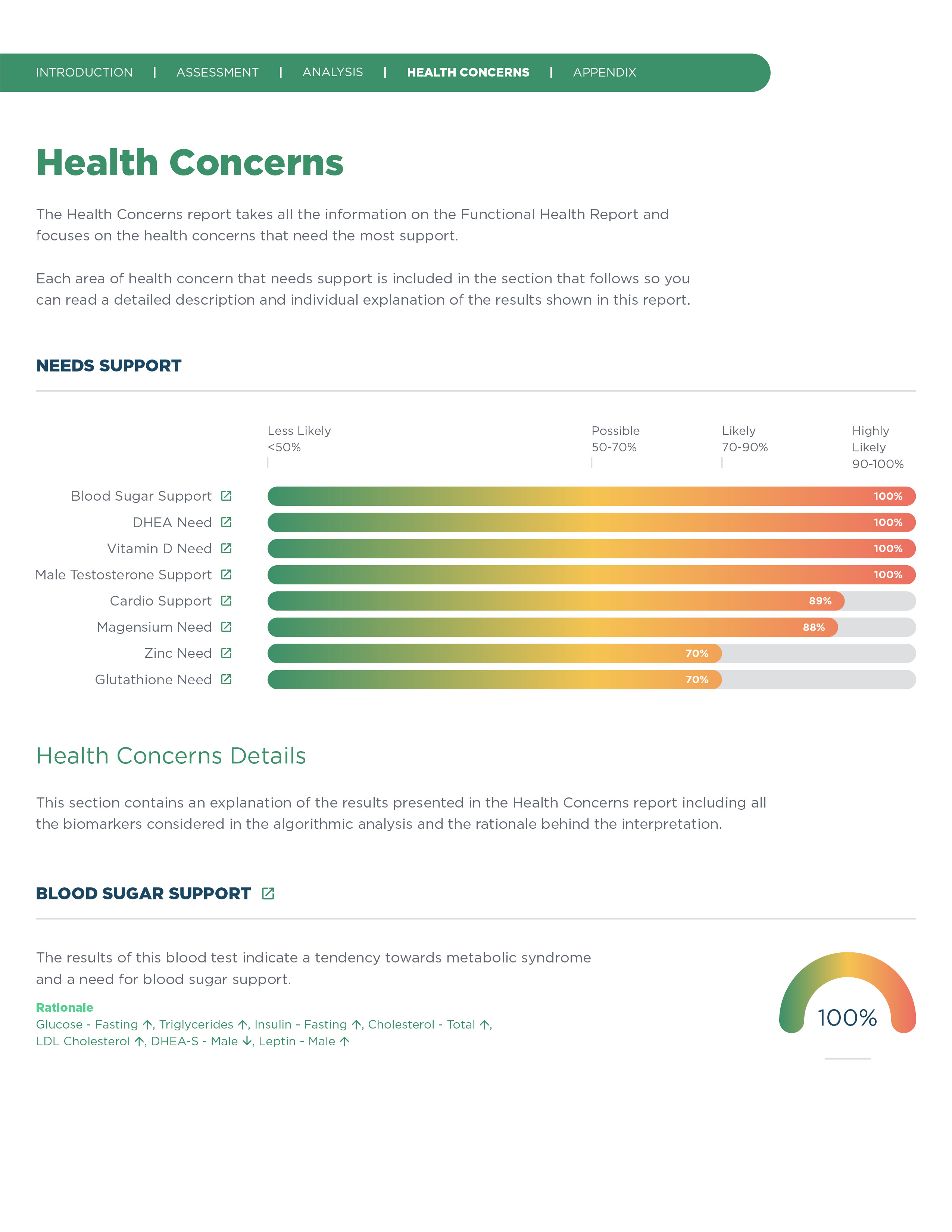
The Health Concerns report gives you an insight into the top areas of concern that need support. Each major area links to a detailed description and individual explanation of why it's an area of concern.
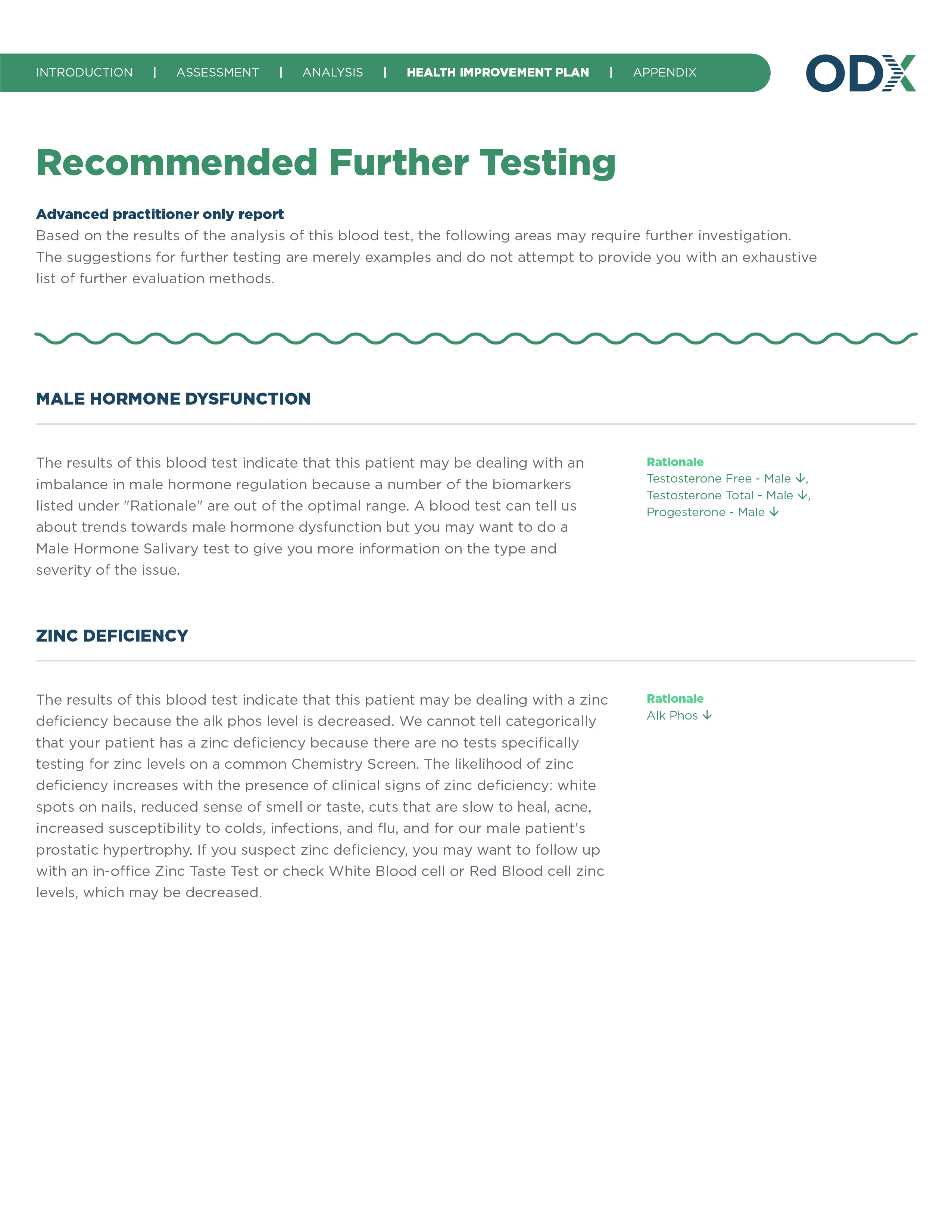
If the Optimal DX Software platform detected any likely areas of dysfunction, this report will automatically suggest areas that could benefit from future lab tests.
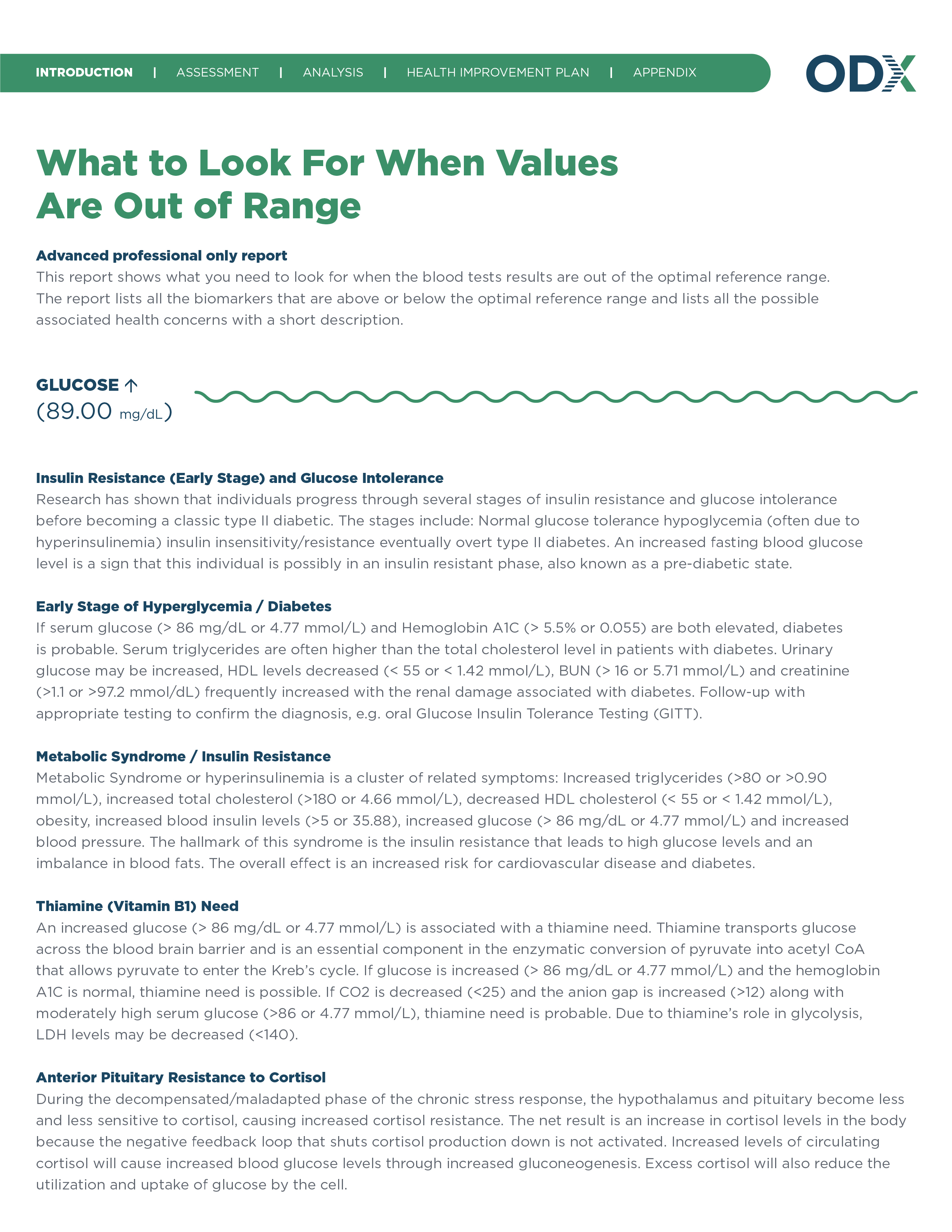
This report calls out important health concerns to watch for when certain biomarkers are out of range. Using it, practitioners can gain an overview of potential issues in their patients at a glance.

Provide a simple, easy-to-understand overview of the functional approach to blood chemistry analysis to your patients. With the right context, patients will more clearly see the value of their Functional Health Report.

Introduce the modules in the Functional Health Report so your patients can easily interpret and digest the information contained within.

Contextualize the Functional Health Report so that you or other practitioners are equipped with the knowledge to interpret its information.

Add your own notes to deliver alongside the Functional Health Report to your patients. You can call out important information, detail your treatment plan, explain the report further or add any information you feel is relevant to your patients’ health journey.

Now that you’ve received your patients’ blood test results, it’s time to review them with a functional lens. This report lists the results of the patients’ tests and whether or not a given biomarker is outside of the optimal range or lab range.

How does a patient’s most recent blood biomarker profile compare to a previous one? This report calls out major areas of change between two lab tests.

Using this report, you can quickly view which biomarkers scored farthest from the median on your patients’ blood test as expressed as a percentage score.

Take a broader view of your patients’ progress over time using the Blood Test History report. This report shows the past 6 blood tests side by side, graphing biomarker change over time.

Easily view all of the biomarkers out of their optimal ranges at a glance. Using the Optimal DX Software platform’s built-in functional blood chemistry information, your patients will gain a brief description of why each biomarker might be elevated or decreased.

View an algorithmically derived assessment of dysfunction risk for each major functional body system — such as the immune, cardiovascular and others — based on the data from your patients’ latest blood test results.

View an algorithmic analysis of the probability of dysfunction for each accessory functional system — such as inflammatory, acid-base and others — based on the data from your patients’ latest blood test results.

Using the results of your patients’ blood test, see the likelihood of dysfunction based on their overall macronutrient status and their individual dietary domains, like vitamin, mineral and protein intake, digestion, absorption, assimilation and cellular uptake.

Dive deeper into your patients’ individual nutrient needs to determine whether there is dysfunction related to the intake, digestion, absorption, assimilation and cellular uptake of nutrients based on the blood biomarker levels detected in your patients’ most recent blood test.

The Clinical Dysfunctions report provides detailed descriptions and explanations of the major areas of concern surfaced by the analysis. It includes all biomarkers involved in the likely dysfunction, the reason why dysfunction is likely with this pattern of biomarkers and recommended future tests.

The Health Concerns report gives you an insight into the top areas of concern that need support. Each major area links to a detailed description and individual explanation of why it's an area of concern.

If the Optimal DX Software platform detected any likely areas of dysfunction, this report will automatically suggest areas that could benefit from future lab tests.

This report calls out important health concerns to watch for when certain biomarkers are out of range. Using it, practitioners can gain an overview of potential issues in their patients at a glance.
Across the globe, doctors of chiropractic are experiencing the difference that the Optimal DX Software makes in their practice.
“Transitioning over to Functional Medicine is very, very important. [...] You really need to find a niche that works for you that would be economically feasible and then utilize good tools such as the functional medicine blood chemistry analysis, the software that [Dr. Weatherby] has created. This is a very vital tool so that you can really utilize your time appropriately and make accurate decisions.”
Dr. Richard PowellFounder of Greater Chicago Functional Health
Read the Interview Transcript
“The software program information provided is always clear, concise and complete, allowing the practitioner to bring the patient/client a very personal customized account of their health status. The beauty of the software program is that it is customizable and carries a historical account that can drive home the recommendations of the practitioner. [...] I suggest you don’t miss out on the opportunity, offered by Dr. Weatherby, to enhance your practice. You won’t regret it!”
Dr. Larry ZezulaDoctor of Chiropractic

“I think having the software makes it not a question of should you, but why wouldn’t you? Because it just helps to elevate the level of care you are able to provide for the patient and even if you didn’t want to get too deep into functional medicine, making suggestions for things that their traditional physician should be looking at for them is valuable and it just helps to solidify the relationship and keep you as someone who is looking out for them.”
Dr. Kasi RoteMedical Director of Rote Wellness
Read the Interview Transcript